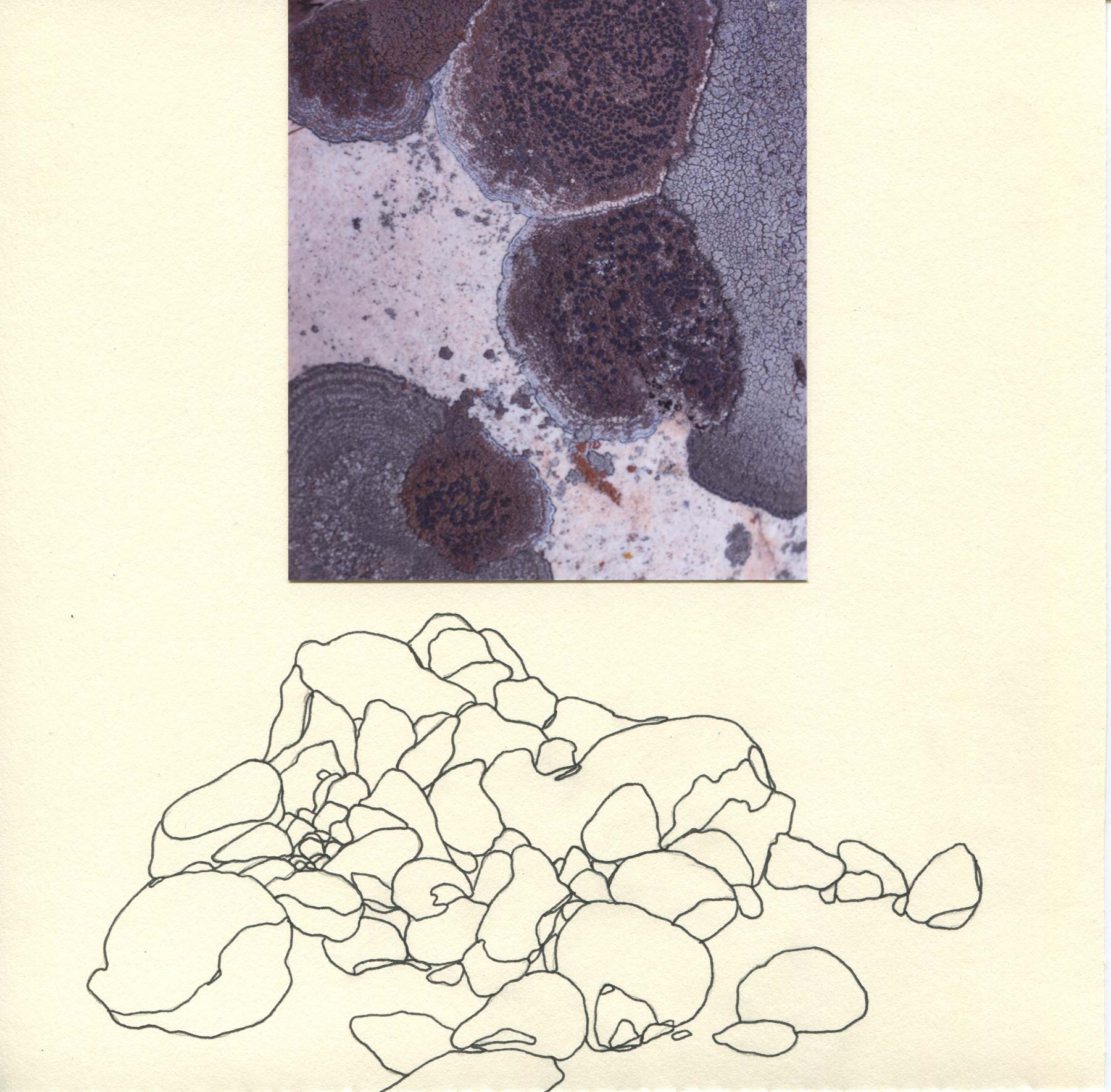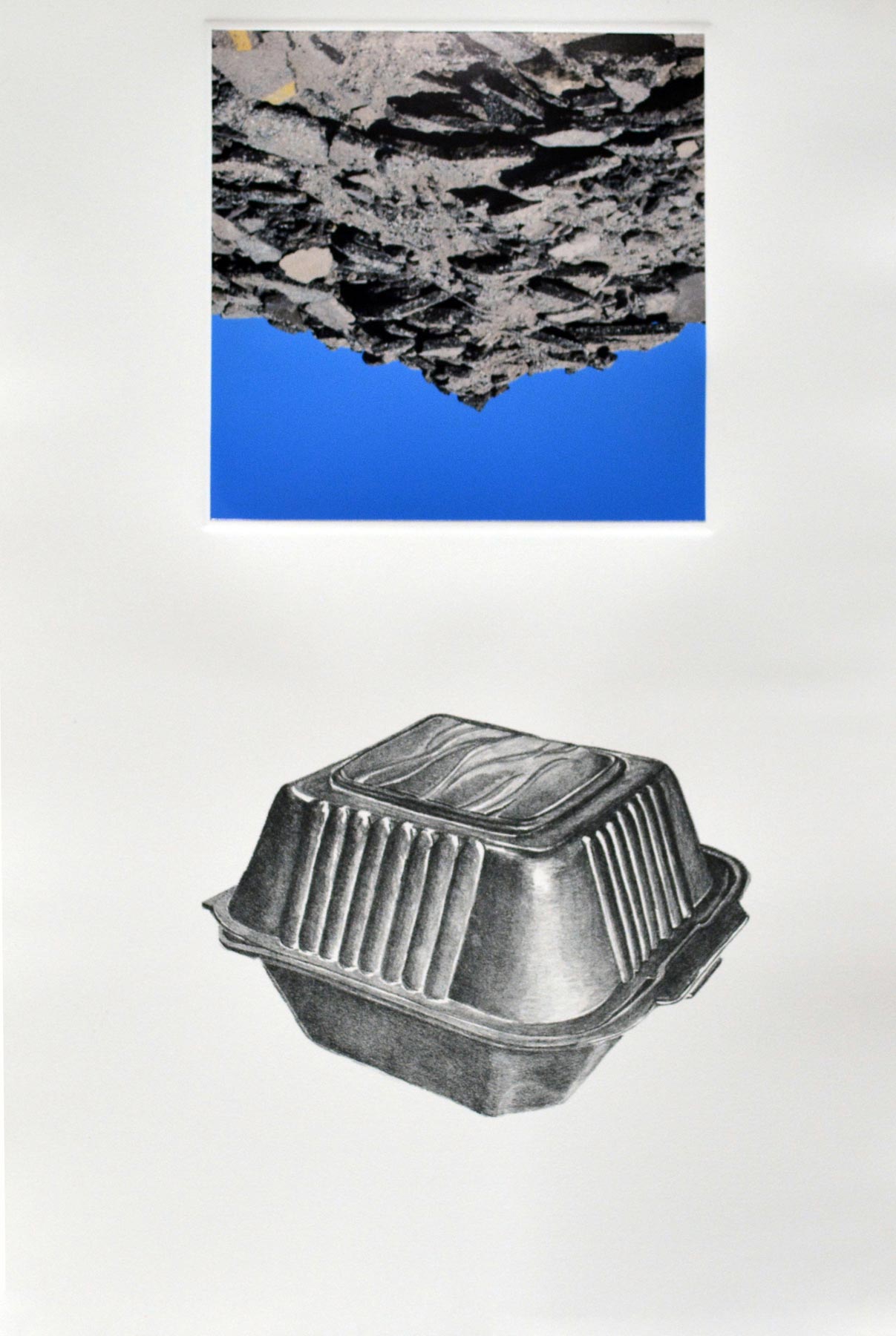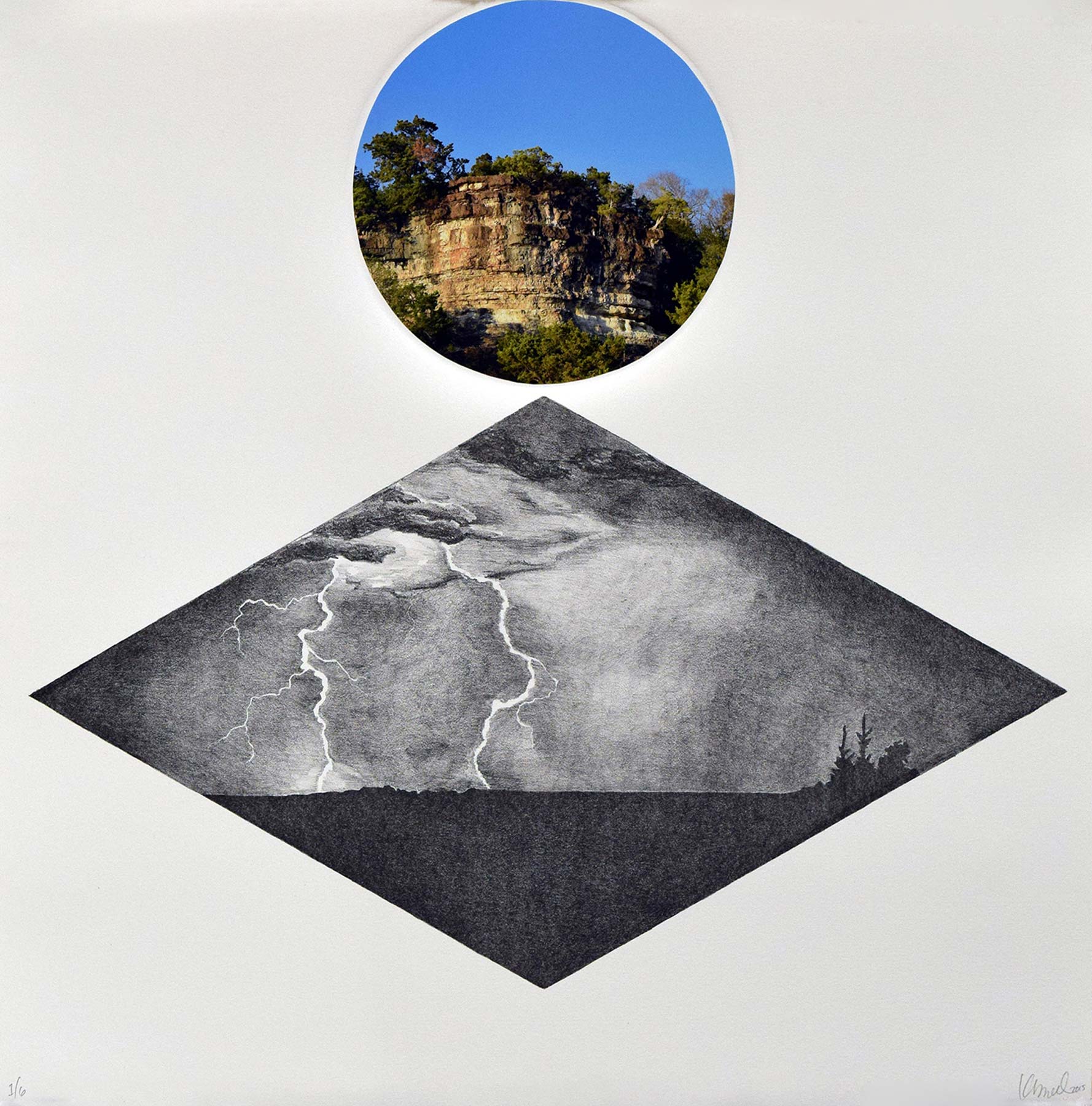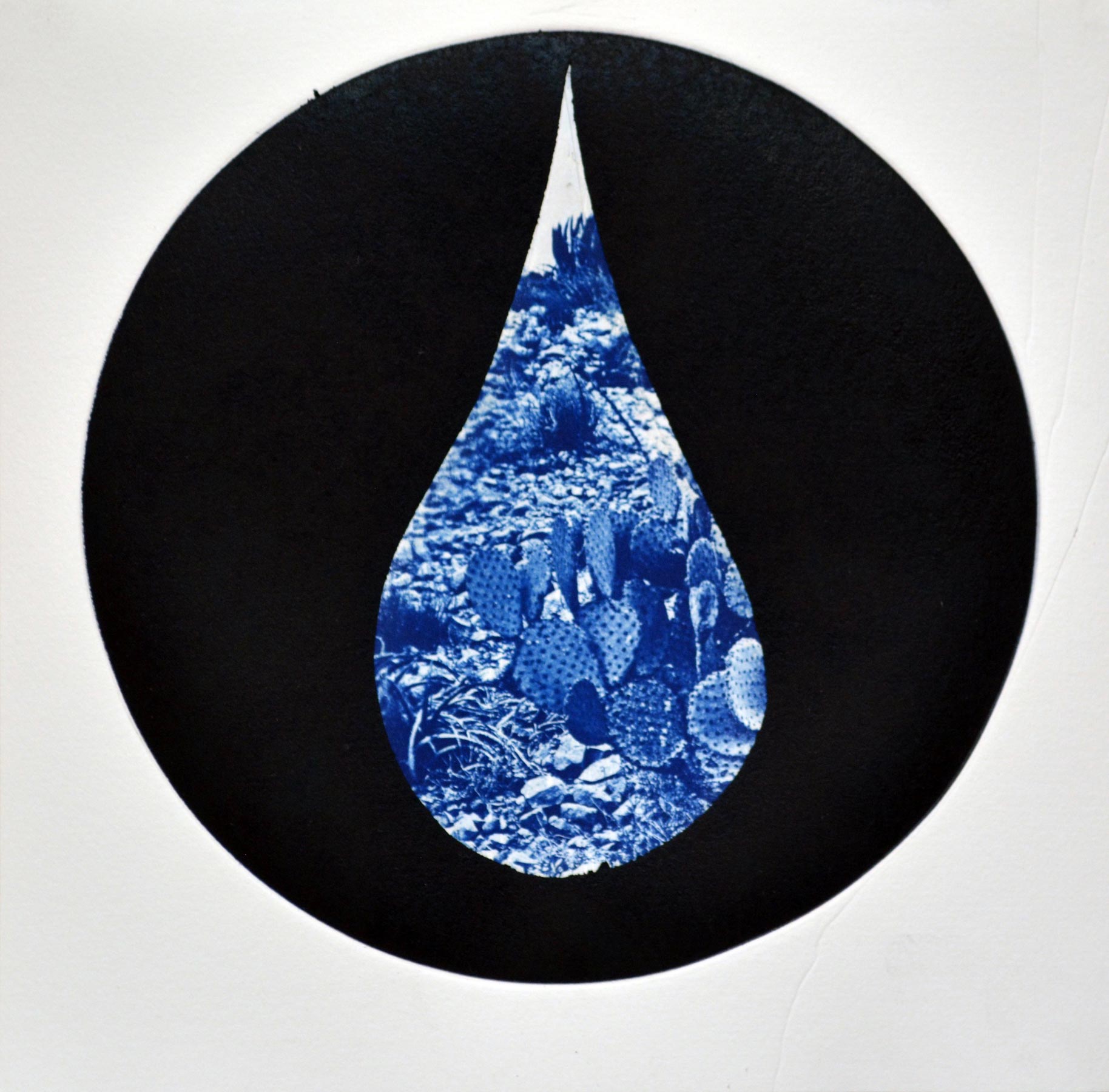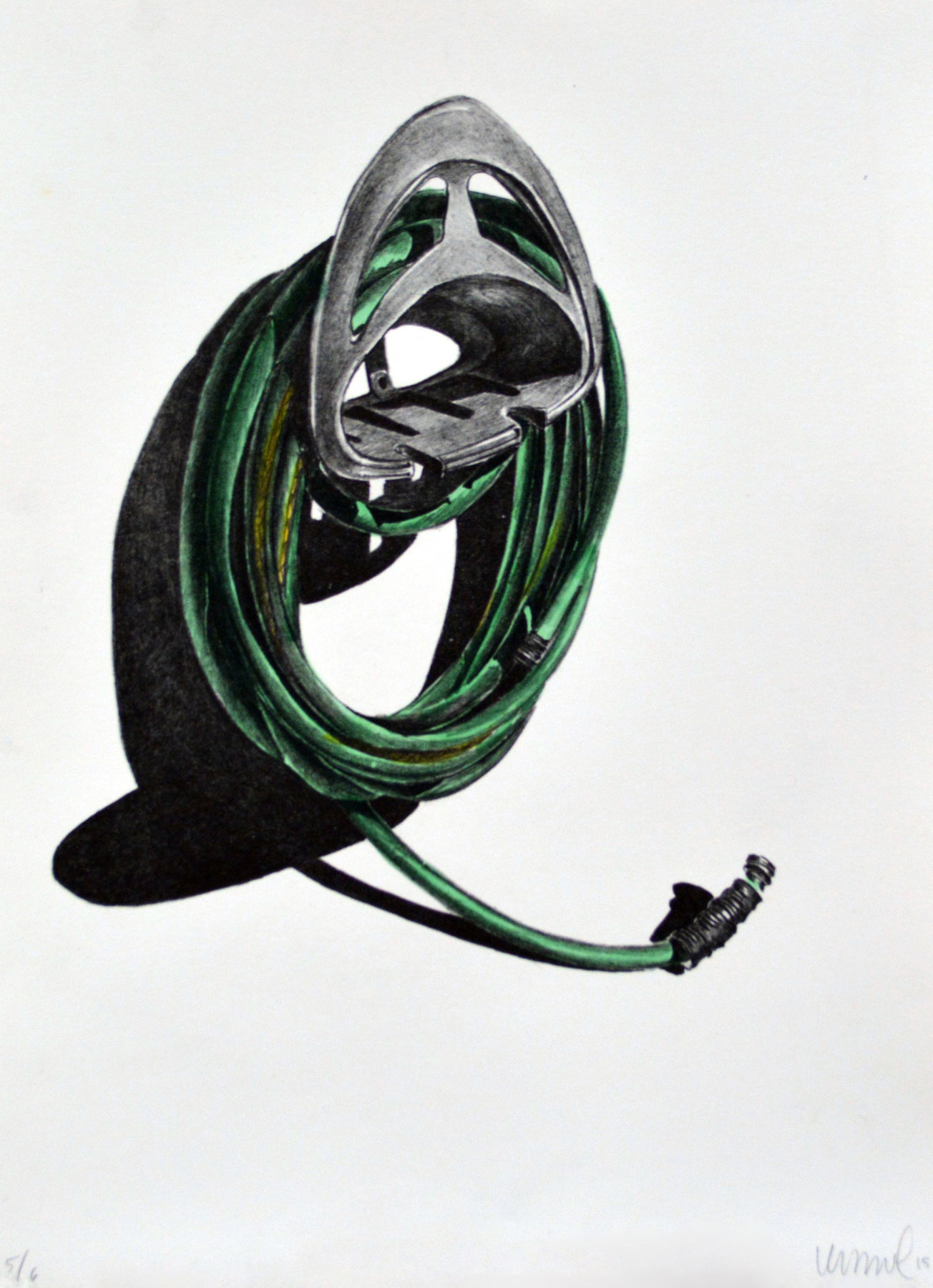
Kristen Bartel, Racine
2016–17 RAM Artist Fellowship Award Recipient
Originally from the Southwest, Kristen Bartel is a multi-media artist, interested in the American West, ecology, consumerism, and duplicable media. Her current work combines traditional print techniques with drawing and photography. Bartel draws inspiration from her personal and family history, and travels regularly to seek new influences.
With her BFA from the University of Texas, Austin, and her MFA from Southern Illinois University, Edwardsville, where she studied printmaking, she exhibits nationally and has work in several public collections. Bartel is an Assistant Professor of Printmaking and Digital Photography at University of Wisconsin-Parkside and was recently Visiting Artist-in-Residence at St Michael’s Printshop in Newfoundland.
Artist Statement
My most recent body of work, American Dreaming, takes a hard look at how we gauge ourselves against one another and the consequences these relationships have on landscapes, environment, and climate. The artworks I am creating explore the impact of consumer culture on natural resources within the context of the “American Dream.” I am compelled by the cost of this idea, both large and small.
Using print and digital media, I create paper-based works that seek to understand constructs and signifiers embedded in the classic definition of the “American Dream.” I seat related, yet incongruous, images next to one another to better see hidden aspects of their relationships. Photographs shown upside down suggest something disconnected. My use of cookie-cutter shapes references mass production which relegates landscape to a thing that is consumable. I consciously call into question my use of duplicable media in relation to mass production. For me, print media is innocent and democratic, yet also suspect, and an accessory to the collective building of “bigger, better and more” thinking.
Kristen Bartel, Racine
2016–17 RAM Artist Fellowship Award Recipient
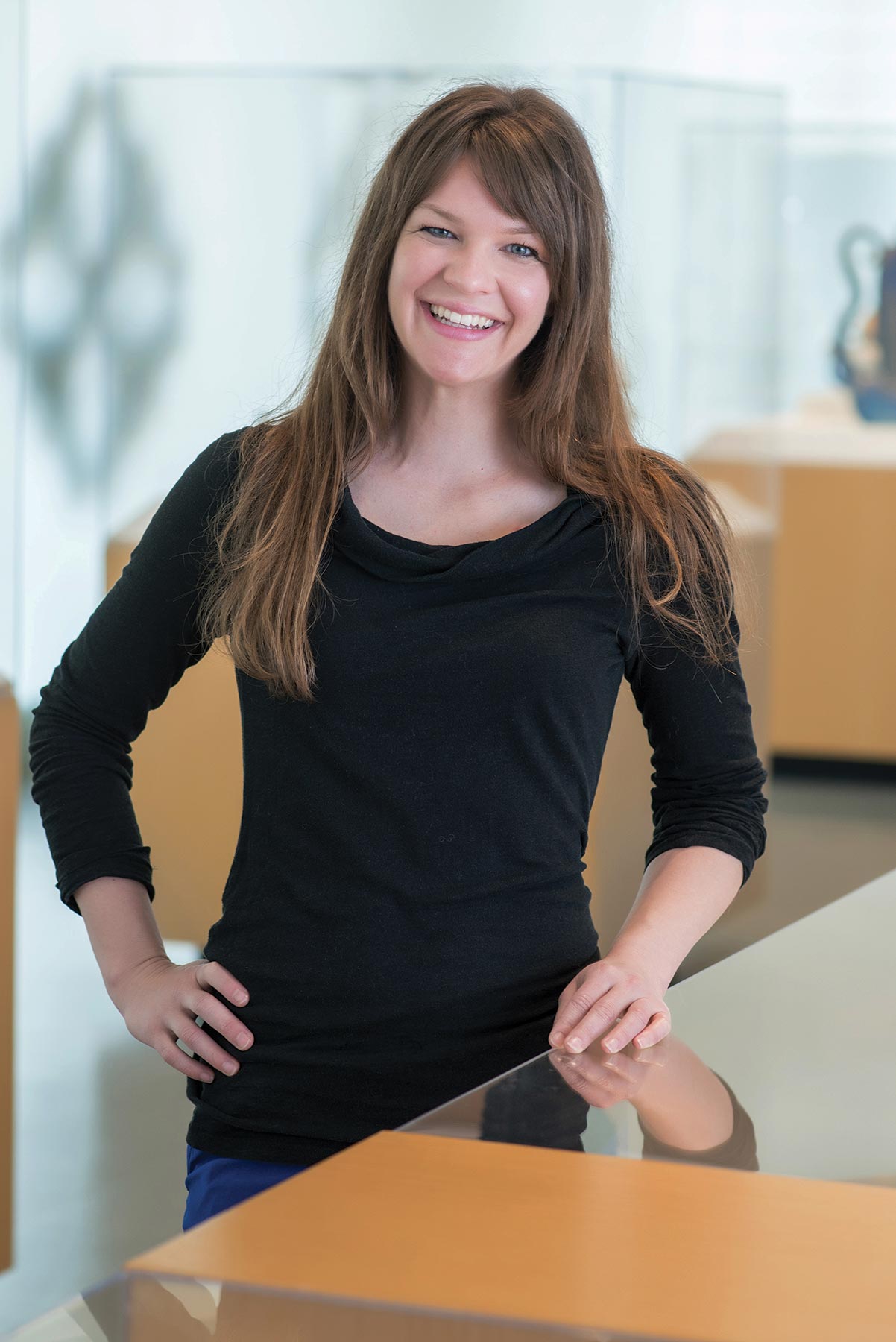
Photography: Camela Langendorf, Varitay Studios
Originally from the Southwest, Kristen Bartel is a multi-media artist, interested in the American West, ecology, consumerism, and duplicable media. Her current work combines traditional print techniques with drawing and photography. Bartel draws inspiration from her personal and family history, and travels regularly to seek new influences.
With her BFA from the University of Texas, Austin, and her MFA from Southern Illinois University, Edwardsville, where she studied printmaking, she exhibits nationally and has work in several public collections. Bartel is an Assistant Professor of Printmaking and Digital Photography at University of Wisconsin-Parkside and was recently Visiting Artist-in-Residence at St Michael’s Printshop in Newfoundland.
Artist Statement
My most recent body of work, American Dreaming, takes a hard look at how we gauge ourselves against one another and the consequences these relationships have on landscapes, environment, and climate. The artworks I am creating explore the impact of consumer culture on natural resources within the context of the “American Dream.” I am compelled by the cost of this idea, both large and small.
Using print and digital media, I create paper-based works that seek to understand constructs and signifiers embedded in the classic definition of the “American Dream.” I seat related, yet incongruous, images next to one another to better see hidden aspects of their relationships. Photographs shown upside down suggest something disconnected. My use of cookie-cutter shapes references mass production which relegates landscape to a thing that is consumable. I consciously call into question my use of duplicable media in relation to mass production. For me, print media is innocent and democratic, yet also suspect, and an accessory to the collective building of “bigger, better and more” thinking.
Interview with the Artist, January 2017
Would you please describe your work—what materials you use; what subject matters you explore?
I use print and digital media to create paper-based works that explore constructs and signifiers embedded in the classic definition of the American Dream. George Carlin said, “The reason why they call it the American Dream is because you’d have to be asleep to believe it’s true.” In a broad sense, it’s this type of disillusionment that my work seeks to understand. Visually, my work can be loud, like Carlin, but at other times it’s quiet and seductive.
In all cases, I believe my artwork is about our actions and the implications of those actions. It has a cause and effect format both conceptually and aesthetically. I seat related, yet incongruous, images next to one another in works on paper to better see hidden aspects of their relationships.
My current research takes a hard look at how we gauge ourselves against one another and the consequences this might have on the landscape (whether preserved or contrived) and climate. In my most recent body of work titled American Dreaming, I take into account these mentioned constructs more specifically; identifying embedded signifiers of success like the emerald green lawn—an aesthetically demonstrative and contrived landscape that utilizes many natural resources and can be highly impactful to ecosystems. My work attempts to consider the implications that the lawn and the water needed to sustain it have on surrounding landscapes—specifically, the unquenched landscapes in the American West.
I combine all manner of traditional printing techniques with inkjet prints, cyanotypes, and unconventional supports as well as experimenting with motion detection and spatial issues.
How often are you in your studio? Do you work outside of your studio much or at all?
My creative practice is front-loaded with fieldwork—looking and thinking and taking “notes” or “sketches” with my camera. This is not usually a forced or planned affair. I travel, hike, mountain bike, canoe and snowshoe to explore new places- all with my dog Django in tow. I consider all of these activities very important aspects of my creative practice. Being on a hike clears my mind and at some point in those “clearings,” I visualize my next project or the solution to a creative problem. This is where the conceptual and aesthetic process of my work typically begins. Even more unconventional is my once a year creative purge during which I pull a 100-hour studio week…just because. A serious test of endurance, it is something I started in 2013 and I hope to keep doing. It is a serious test of endurance and it builds will that I can use later in the year.
Aside from that, a single print can take anywhere between a day and a month to create, depending on the techniques I am using and my general willingness to be “locked up” inside. Lucky for me, Wisconsin has plenty of days that make for good, full-day studio sessions. But if the weather is nice and trails are dry, you will probably find me mountain biking the John Muir trails in the Kettle Moraine State Forest.
What inspires you most these days? But also what do you go to bed thinking about most nights?
The most inspiring moments for me happen while traveling to new places. This might be hiking a new route or taking a longer trip. I find patterns in these places and anywhere I find a break in the pattern I am immediately drawn to it. These are the moments of inspiration.
Also, right now, I am looking at contemporary artists like Ed Ruscha, David Buckland, and Mel Chin. I try to balance that by looking at 19th-century photography and printmaking. I am currently very interested in wood engravings that were published in early American tourist guides. By looking at a range of contemporary and historic examples, I can start to develop a bigger picture of how artists have approached the subject of landscape and preservation.
I continue to be influenced by scientific modes of image making such as data visualization by way of weather and climate modeling. My attentions are always captured by weather patterns and changes in landscapes. This is where I see the residual effects of our actions the most glaringly.
Aside from my 100-hour workweek, I’m not obsessive about my studio practice and I don’t think about how much work I need to get done the next day. I’ve never gotten wrapped up in the idea of fame or notoriety either. Artistically, I’m not a dreamer in that way. I make artwork about things that are on my mind; things that I see and take note of and things that I feel define my experiences. In the evenings, I practice mindfulness and try to be self-aware. I attempt to slow my thoughts, I relax and try to cultivate a feeling of oneness. This is almost always accompanied by a cup of chamomile tea. This practice doesn’t require a lot of thought so I don’t go to bed at night thinking about much.
Why the RAM Artist Fellowship? Since we are midway through the process, can you assess how you are feeling at this point? Are you where you thought you would be? Have your plans changed since the fellowship year started?
I chose to apply for the RAM Artist Fellowship for several reasons. Firstly, since I am new to area, the Fellowship will be an opportunity for me to make a more formal introduction of my work to the Racine, Kenosha, and surrounding communities.
Second, the scope of the fellowship has allowed me to move a little slower in the studio and reflect more on pieces before they go on public display—a luxury I have not previously enjoyed. This slowness has allowed me to distill my ideas down to only the pieces that are the most relevant to the visual statement I want to make.
Most importantly, I chose to apply for the RAM Artist Fellowship because it is associated with a museum that is deeply engaged with exhibiting and collecting fine contemporary craft. As an educator and scholar of print media, it is a goal to define printmaking as a relevant contemporary practice—one that is rooted in craft and industrial arts, yet has expanded seamlessly into a broader contemporary art realm. I explore the possibilities of prints by combining processes, synthesizing historical context in my practice, and using digital production tools. Part of the goal in making this work is to identify printmaking as part of a twenty first-century language that uses digital media as a basis for communication. RAM seems like the ideal place for this type of dialog to take place.
I feel good about being midway through the fellowship and feel like I am right where I should be. Pieces haven’t been overworked and new ideas keep coming. This allows things to remain fresh and interesting for me. I look forward to the next steps—seeing how the work will fit into the gallery and how it can create new dialogues with the work of the other fellows. I see that as a great aspect of this fellowship—being able to exhibit in tandem with three other local artists.
No major changes. My plans have only grown, as I expected. I have a pretty established way of working that is based on experimentation. One idea leads to the next and if the practice is going well then there are moments when ideas come full circle.
Sample of Work
Click/tap an image for more information
Stay in Touch
The Racine Art Museum and RAM’s Wustum Museum work together to serve as a community resource, with spaces for discovery, creation, and connection. Keep up to date on everything happening at both museum campuses—and beyond—by subscribing to our email newsletter:


